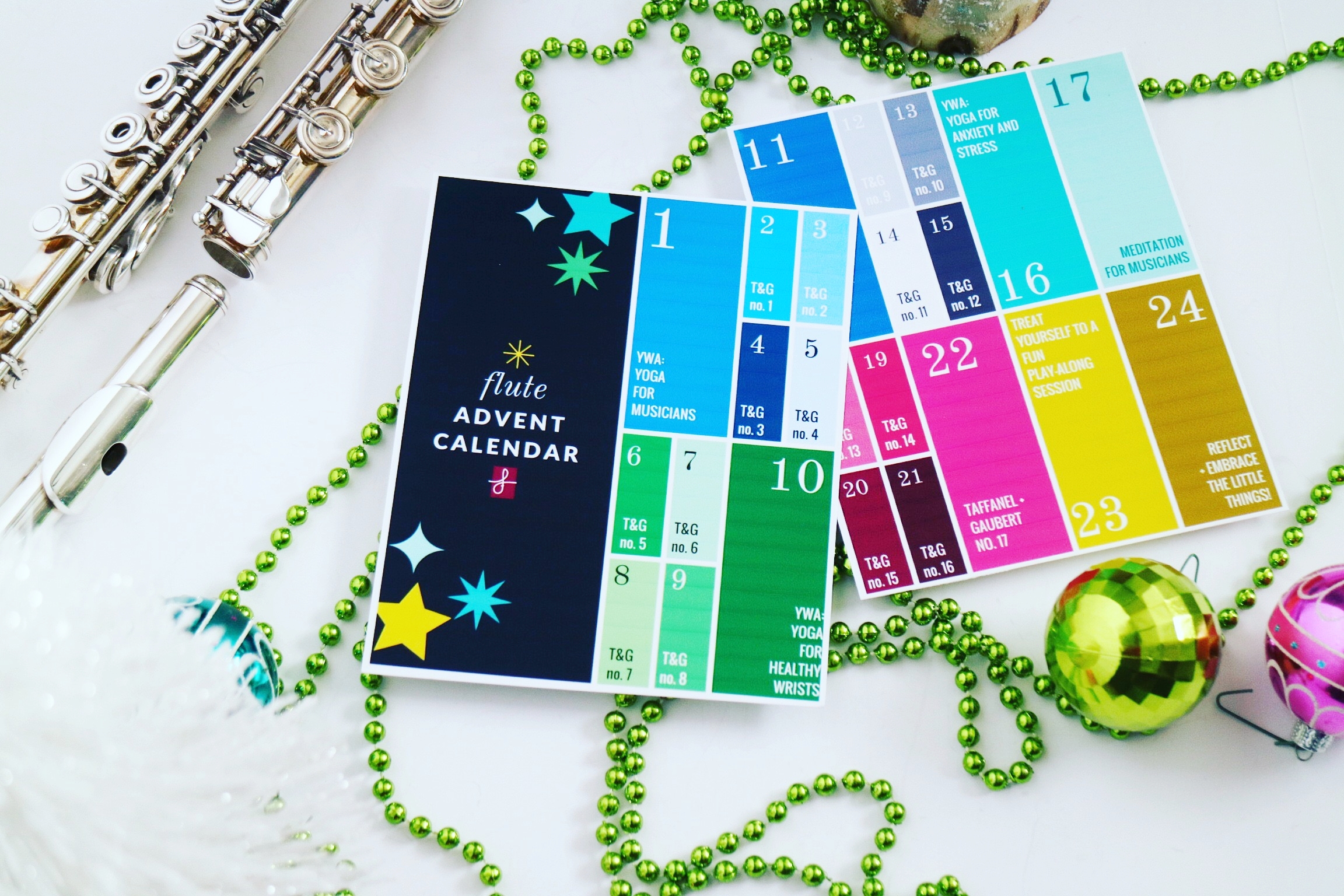Technique Challenge: Maquarre's Daily Exercises [+ Free Download]
It’s time for a fresh technique challenge! This time, it’s on André Maquarre’s Daily Exercises for Flute.
This is a book I’ve had for quite some time, and I pull it out every now and then when I feel like taking a break from the typical Taffanel and Gaubert or Reichert exercises I love so much. These exercises have a lot of pizzaz and feel especially fun to play, while addressing some specific challenges.
I haven’t spent much time going through each thoughtfully, so it’s time to dive in and learn more about them, and commit to improving them over the next few weeks!
(This book is not in the public domain or available online, but it can be purchased through most flute sheet music retailers!)
Maquarre’s Instructions
Maquarre’s Priorities for Clean Technique:
It’s especially interesting to take note of Maquarre’s notes at the beginning of the book and throughout. Here are some of the highlights I’ll be keeping in mind while working through the exercises:
"Clean Technique” is an “even, slow passing-over from one tone to another without a blur. For instance, in passing from B to C# two fingers must leave exactly together; if one leaves one hundredth part of a second after the other, you will hear a C-natural in between. That is not clean.”
“Evenness and beauty of tone will improve with the strengthening of the action of the lips while playing these passages.”
“After a while you will be able to forget the difficulties of the flute and to think only how the music should be phrased.”
2. Maquarre’s Practice Approach:
Evenness is of top priority, and he recommends utilizing dotted rhythm practice for anything that sounds uneven, both in the introductory notes and again at the beginning of the first exercise.
“Let this book be your guide during one hour every day.”
“Each exercise may be repeated six of seven times, and when it does not go over the C above the staff, play it first as written, and then an octave higher.”
3. Maquarre’s General Rules:
“When ascending, play crescendo. When descending, play diminuendo.”
“When the measure consists of notes of equal length, take breath, if needed, after the first note of the measure. When notes are unequal, take breath after the longest note. Do not shorten the note, and try not to lose time in breathing.”
“For fingering always employ, not the easiest, but the truest to pitch. Take F# with the right-hand 3rd-finger, in all octaves and everywhere, excepting when the F# comes between two E’s or next to a high B-natural. When practicing, do not take B-flat with the thumb, but with the right-hand 1st finger.”
“For trill-fingering many Flute Methods give a good chart; the best is the Altes School for Flute (Paris). When practicing, be careful never to employ “faked” fingering; on request I shall be glad to tell the reason.”
Set Your Own Goals + Intentions
Intentions: Things to keep in mind every time you practice - what do you want to remain aware of? What habits do you want to replace while you’re putting in the time with these exercises?
Goals: What specific, measurable actions or landmarks do you want to achieve?
Here are some of mine:
Always have the tuner and metronome on.
Aim to memorize by mapping out patterns and thinking through each key.
Make clear phrasing choices - think in music-brain, not flute-difficulty-robot brain.
Prioritize ease and effortlessness in the upper register.
Notice flute balance and fingers, and how much my left pinky finger grips or strays away.
Stay grounded and feel support through the legs and floor, minimize movements.
Improve breathing by playing 2x in one breath, and note how slowly in one breath.
Utilize various rhythms, articulations, and extended techniques while practicing each.
Improve double and triple tonguing speed and precision.
Begin slowly and luxuriously to encourage healthy sound and support habits and finger precision before increasing the tempo.
Take note of Maquarre’s thoughts on true fingerings and crescendo/decrescendos, while adding in other ways on the repeats, as well.
Here’s a Sample Chart:
I’m planning to do the Daily Exercises (the major scales and chromatic scales in the front of the book) daily!
Then, I’ll dedicate each day to one exercise, rotating through in order. By the end of the week, I’ll have done each once and the daily exercises seven times.
The chart includes 28 days, which allows for 4 rotations through each exercise.
Get the FREE PFD Practice Guide + Tracker!
Don’t forget to tag me on Instagram (@joleneflute) so I can share your posts and cheer you on! I’ll be sharing my own videos and more practice thoughts starting tomorrow, Monday 11/4!




![Technique Challenge: Maquarre's Daily Exercises [+ Free Download]](https://images.squarespace-cdn.com/content/v1/5698446a89a60aae9b0dd518/1572800900703-MMXO2XYG0FF0L1GUJIPY/Copy+of+Copy+of+Copy+of+Copy+of+Copy+of+Copy+of+Copy+of+D-I-YHOLY+GRAIL.jpg)
![Scale Game Tracker [Free Download]](https://images.squarespace-cdn.com/content/v1/5698446a89a60aae9b0dd518/1527520685839-WID89MF17Y5FB6COJIOV/IMG_5873.JPG)


![August Inspiration Calendar [Free Download]](https://images.squarespace-cdn.com/content/v1/5698446a89a60aae9b0dd518/1501560177043-SNSYPJ1Z10WLEFQR83NZ/IMG_2723.JPG)
![Holy Grail Packet [+ Free Download]](https://images.squarespace-cdn.com/content/v1/5698446a89a60aae9b0dd518/1501385992587-BIK2YTPYCNKNT5Z9TCDV/IMG_2453.JPG)
![July Inspiration Calendar [Free Download]](https://images.squarespace-cdn.com/content/v1/5698446a89a60aae9b0dd518/1498920040976-RGSQZD73VD5ZZJD8XFX7/IMG_0965.JPG)
![Summer Workout Practice Planner [Free Download]](https://images.squarespace-cdn.com/content/v1/5698446a89a60aae9b0dd518/1498403111711-BYLXHOD241M8S00NXTBD/IMG_0428.JPG)